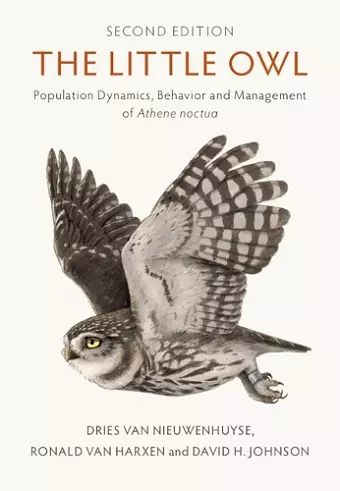The Little Owl
Population Dynamics, Behavior and Management of Athene noctua
David H Johnson author Dries Van Nieuwenhuyse author Ronald van Harxen author Joris De Raedt illustrator
Format:Hardback
Publisher:Cambridge University Press
Published:19th Oct '23
Currently unavailable, and unfortunately no date known when it will be back

Exceptionally illustrated second edition featuring long-term behavioral observations, discoveries and breeding biology of the Little Owl.
Extensively updated and illustrated second edition that features drawings of all Little Owl subspecies, embryonic development, nestling development, feather growth and moult, including concrete management suggestions. Whilst being an invaluable resource for academic researchers, its open style holds undoubted appeal for amateurs and enthusiasts.The basic biology of owls is poorly understood compared to that of other bird species. The Little Owl, Athene noctua, is one of the best models for biological and conservation research. Though widespread across Europe, Asia and North Africa, populations of the Little Owl are now in decline, making studies of its behavior and ecology all the more important. This extensively revised and updated second edition features substantial new long-term data on population dynamics, behavioral observations and breeding biology of the Little Owl. The authors discuss its wide-ranging ecology, genetics, subspecies, and population status by country. In addition, they outline a research strategy and monitoring program. Exceptional illustrations of all fourteen subspecies cover embryonic and chick development, feather growth and moult, including high-quality drawings presenting concrete management suggestions. Whilst being an invaluable resource for academic researchers, its accessible and straightforward style will also appeal to amateur ornithologists and enthusiasts.
'Among the many fascinating titbits to be found in The Little Owl is a note on beak colour. Recent research shows that females with yellower beaks rear significantly larger nestlings than their duller billed counterparts: what is more, juveniles sporting the brightest beaks receive more food than siblings with drab-coloured or grey bills. But there is nothing dull or drab about this book. Highly recommended.' Dan Eatherley, Ibis
ISBN: 9781009100151
Dimensions: 251mm x 174mm x 34mm
Weight: 1340g
539 pages
2nd Revised edition